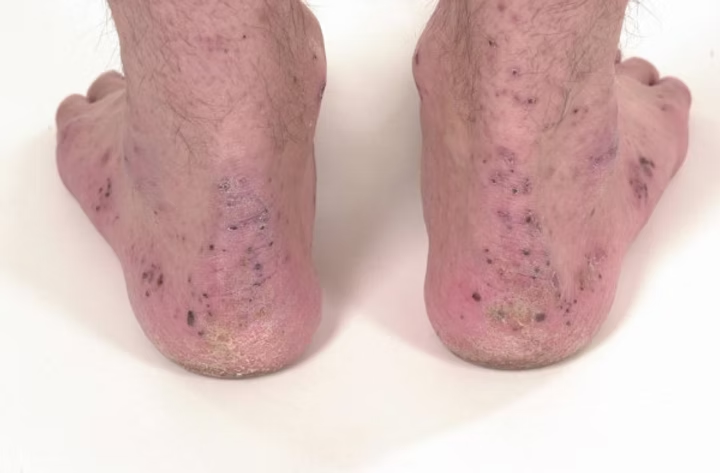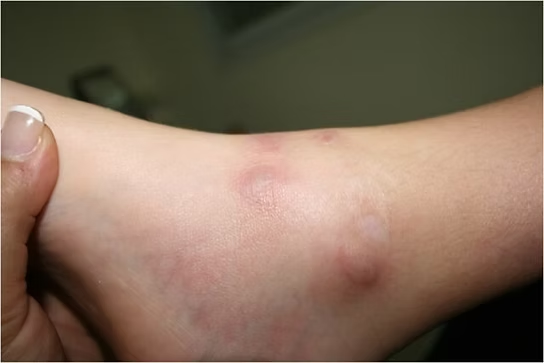Crohn’s disease (CD)
- Fysiobasen

- Dec 15
- 5 min read
Crohn’s disease (CD) and ulcerative colitis (UC) are both inflammatory bowel diseases (IBD). Crohn’s disease is characterized by chronic inflammation in the gastrointestinal tract, where the inflammation extends through the entire intestinal wall, from the mucosa to the outer connective tissue (serosa).

Crohn’s disease is a serious, chronic inflammatory condition that can be challenging to diagnose and manage. The disease follows a fluctuating course with periods of exacerbation (attacks) and remission. Repeated attacks may cause the disease to progress from mild/moderate to severe, with extensive inflammation (fistula formation) or scarring (strictures). There is no cure, and most patients experience significantly reduced quality of life¹.
Causes (Etiology)
The cause of Crohn’s disease is unknown, but both genetic factors and environmental influences on the immune system play a role.
The gut microbiota in people with Crohn’s disease is altered, though it remains unclear whether this is a consequence of the inflammation or part of the cause.
A diet high in processed foods, sugary drinks, and fast food may increase risk. Crohn’s disease is not contagious².
Epidemiology
Crohn’s disease occurs most frequently in Western industrialized countries, particularly in North America, Northern Europe, and New Zealand.
The disease has a bimodal distribution: onset most often occurs at ages 15–30 and 40–60. It is more common in urban than in rural areas¹.
Symptoms and Clinical Presentation
Crohn’s disease often has a fluctuating course with periods of exacerbation (flares) and symptom-free periods (remission)³.
Common symptoms during flares:
Abdominal pain, especially in the lower right abdomen
Bloating, gas
Diarrhea, often with mucus and blood
Fever
Weight loss
Anemia
In acute disease: perianal abscess, perianal Crohn’s, fistulas, and rectal ulcers¹
About 50% of patients have mild symptoms, while the rest may experience more severe problems with recurrent pain and inflammatory episodes. Symptom-free periods may last months to years, but most patients experience recurrent flare-ups over time³.
Types and Localization of Crohn’s Disease
Crohn’s disease can affect different parts of the gastrointestinal tract and is categorized by location and disease pattern⁵:
Gastroduodenal Crohn’s: Rare, affects stomach and duodenum (about 5%)
Jejunoileitis: Inflammation in the jejunum (middle part of the small intestine), rare
Ileitis: Inflammation in the ileum (last part of the small intestine), occurs in 30%
Ileocolitis: Inflammation in both ileum and colon, most common (50%)
Crohn’s colitis: Inflammation confined to the colon, occurs in about 20%. Often associated with extraintestinal symptoms and perianal complications.
Perianal Crohn’s: Affects about one-third of patients, with fistulas, fissures, abscesses, or skin tags around the rectum⁶
Complications
Crohn’s disease is a systemic condition and may lead to a variety of local and general complications:
Strictures, fistulas, and abscesses in the intestinal wall
Colorectal cancer (carcinoma)
Ankylosing spondylitis (inflammatory joint disease in spine and pelvis)
Skin conditions such as erythema nodosum and pyoderma gangrenosum
Kidney and gallstones
Anemia
Increased risk of blood clots (hypercoagulation)
Osteoporosis
Eye inflammations (e.g., uveitis)¹
Diagnostics
The diagnosis of Crohn’s disease is made after excluding other possible causes. Evaluation includes:
Blood tests
Test for blood in stool
Colonoscopy or flexible sigmoidoscopy
X-ray with barium enema or imaging of the small intestine
CT of abdomen/intestine
Capsule endoscopy⁶
Many patients with Crohn’s develop complications requiring surgery, often multiple times throughout life. After surgery, regular follow-up with endoscopy is recommended after 6–12 months. If no signs of recurrence, it should be repeated after 1–3 years¹.
Treatment and Follow-Up
Treatment is categorized by severity:
Mild to moderate disease: Treated with medications such as mesalazine (5-ASA), immunomodulators, methotrexate, and steroids.
Moderate to severe disease: Combination of immunomodulating drugs and/or biologics.
Other important measures:
Referral to a clinical dietitian for individualized nutritional guidance and supplementation before and during treatment.
Active disease during pregnancy increases risk of complications, and flare-ups must be treated quickly and effectively⁷.
Psychological support and counseling for managing depression and stress.
Patient education on disease and lifestyle advice:
Avoid NSAIDs (may worsen disease)
Manage mild diarrhea with antidiarrheal agents if needed
Avoid smoking
Follow dietary advice from a clinical dietitian¹
Physiotherapy
Physiotherapists play an important role, especially in managing complications such as joint and back problems, reduced bone density, and lowered physical capacity:
Crohn’s disease can cause joint inflammation, particularly in the lower back and sacroiliac joints. Joint problems are common, even in young patients.
The physiotherapist must always investigate underlying causes when patients present with back, hip, or pelvic pain, and consider possible inflammatory bowel disease.
The disease can reduce absorption of vital nutrients (e.g., vitamin D and calcium), increasing the risk of osteoporosis and vertebral fractures. Physiotherapists should educate patients about bone health and risk factors.
Dehydration may occur during exercise; physiotherapists should be alert to symptoms such as headache, dry lips, and confusion.
Physical activity strengthens the immune system, reduces depression, improves self-image, and supports coping. The physiotherapist should design training programs, coping strategies, and techniques to handle the unpredictability of the disease⁹.
Monitoring and Follow-Up
The Crohn’s Disease Activity Index (CDAI) is used to monitor disease progression or improvement over time. A score below 150 indicates low disease activity, while higher scores predict a worse prognosis¹⁰.
Diet
Nutritional advice should be provided by a clinical dietitian, as patient needs vary. There is much uncertainty and conflicting information, so individualized recommendations are essential².
Differential Diagnoses
Symptoms of Crohn’s disease can resemble many other conditions:
Amebic infection
Behçet’s disease
Celiac disease
Intestinal carcinoid tumor
Intestinal tuberculosis
Mesenteric ischemia
Ulcerative colitis
References
Ranasinghe IR, Hsu R. Crohn disease. Available from: https://www.ncbi.nlm.nih.gov/books/NBK436021/ (last accessed: 1.10.2022).
Crohn's and Colitis Australia. About Crohn’s Disease. Available from: https://crohnsandcolitis.org.au/about-crohns-colitis/crohns-disease/about-crohns-disease/ (last accessed: 1.10.2022).
Crohn’s and Colitis Foundation of America. About Crohn’s Disease. Available from: http://ccfa.org/info/about/crohns (last accessed: 4.3.2010).
Craig T. A Frank discussion on Crohn's Disease. Available from: http://www.youtube.com/watch?v=Npda8xr2G-Y (last accessed: 5.4.2010).
John Hopkins Medicine. Crohn’s Disease: Introduction. Available from: http://www.hopkins-gi.org/GDL_Disease.aspx?CurrentUDV=31&GDL_Disease_ID=291F2209-F8A9-4011-8094-11EC9BF3100E&GDL_DC_ID=D03119D7-57A3-4890-A717-CF1E7426C8BA (last accessed: 5.4.2010).
Cheifetz A, Moss A, Peppercorn M. Crohn’s Disease. Knol Beta. Available from: http://knol.google.com/k/crohn-s-disease# (last accessed: 5.4.2010).
Kalla R, Ventham NT, Satsangi J, Arnott ID. Crohn’s disease. BMJ. 2014;349. Available from: https://www.bmj.com/content/349/bmj.g6670 (last accessed: 1.10.2022).
Enzine Articles. The Link Between Crohn's Disease And Lower Back Pain. Available from: https://ezinearticles.com/?The-Link-Between-Crohns-Disease-And-Lower-Back-Pain&id=7654760 (last accessed: 1.10.2022).
Goodman CC, Fuller KS. Pathophysiology: Implications for the Physical Therapist. 3rd ed. St. Louis, MO: Saunders-Elsevier; 2009.
Crohn’s Disease Activity Index (CDAI). CDAI Online Calculator. Available from: http://www.ibdjohn.com/cdai/ (last accessed: 4.3.2010).









